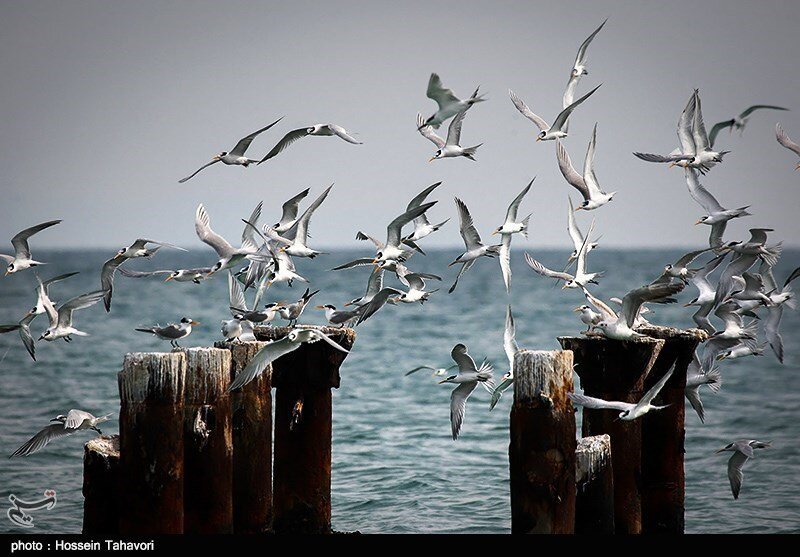Kish Island hosting 30% of Iran’s bird species

TEHRAN – Kish island, stretching to 91 square kilometers, is home to 30 percent of the whole bird species in the country.
The island enjoys a unique situation in the strategic Persian Gulf region among tens of large and small islands, which is known as the Pearl of the Persian Gulf since ancient times. Its calm coasts are covered with coral sands. Diverse plants and native trees, as well as a pleasant climate seven months a year are among the outstanding characteristics of the island.
Kish has a long history of about 3,000 years, which ranks it among the world's 10 most beautiful islands and it is the 3rd most visited vacation destination in West Asia. Kish, like the other Persian Gulf islands, especially the islands in the Strait of Hormuz, is located on a narrow strip of tropical vegetation in the Northern Hemisphere, which has special geographic and climatic attributes.
Environmentalists have identified 193 different bird species on the island so far IRNA quoted Maryam Mohammadi, head of the department of environment of Kish Free Zone Organization, as saying on Saturday.
Over the last four years, images of 137 endangered, rare, migratory, and native bird species of this island have been collected, she added.
Many birds have been observed on Kish Island after many years, including cinereous bunting, and the Jacobin cuckoo, she noted.
Green-backed herons and birds of prey such as the crested honey buzzard, osprey, Eurasian hobby, and lesser kestrel are rare in the region and even in the world, which chooses Kish island to winter, Mohammadi concluded.
Iran’s impressive bird diversity
Iran is host to over 600 species of birds, the number of which is increasing year by year.
Iran is decorated with impressive wetlands that hold a great share of aquatic and bird species and wildlife; Anzali Wetland, Qeshm Island, Orumieh Lake, and Miankaleh Peninsula are among the most important locations for bird watching in Iran.
Miankaleh International Wetland in Mazandaran, called the birdwatching paradise of Iran, stretches to a total area of 68,000 hectares, which is home to at least 130 species of migratory species with a population of 1.5 million.
Being an impressive bird-watching destination, the wetland displays a variety of bird species such as otters, all kinds of fish-eating ducks (common goldeneye and Mergus), pelicans, flamingos, and cormorants, common pheasants, partridges, mute swan, tundra swan, and coots. Ashuradeh was introduced and registered as one of the world's first biosphere zones in 1975.
Gomishan wetland in Golestan province is home to over 20,000 water birds, and more than 20 species of birds, which supports three IUCN Red List vulnerable species of waterbirds, i.e., Pelecanus crispus, Aythya nyroca, and Vanellus gregarious, as well as the vulnerable mammal Phoca (Pusa) caspica; it is also an important staging area for the fish subspecies Rutilus rutilus caspicas.
Located at the foot of the Zagros mountains in north-western Iran, Zarivar is a freshwater wetland hosting over 74 bird species, which is designated as a Ramsar Site.
The Site provides a suitable breeding and resting place for birds and other wetland animals, and due to the relatively extensive reed beds, it is an important overwintering site for northern migratory birds.
Located in Chaharmahal-Bakhtiari province, Choghakhor Wetland is flowing on 1687 hectares; designated as a hunting restricted area. It supports more than 47 bird species, with breeding populations of migratory birds such as the Northern Pintail (Anas acuta).
It supports more than 1 percent of the population of Gadwall (Anas strepera) and harbors threatened species such as the endangered White-headed Duck (Oxyura leucocephala) and the vulnerable Eastern Imperial Eagle (Aquila heliaca).
FB/MG
Leave a Comment